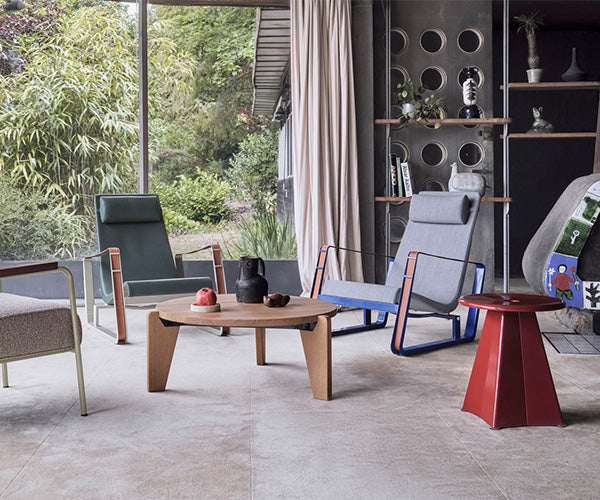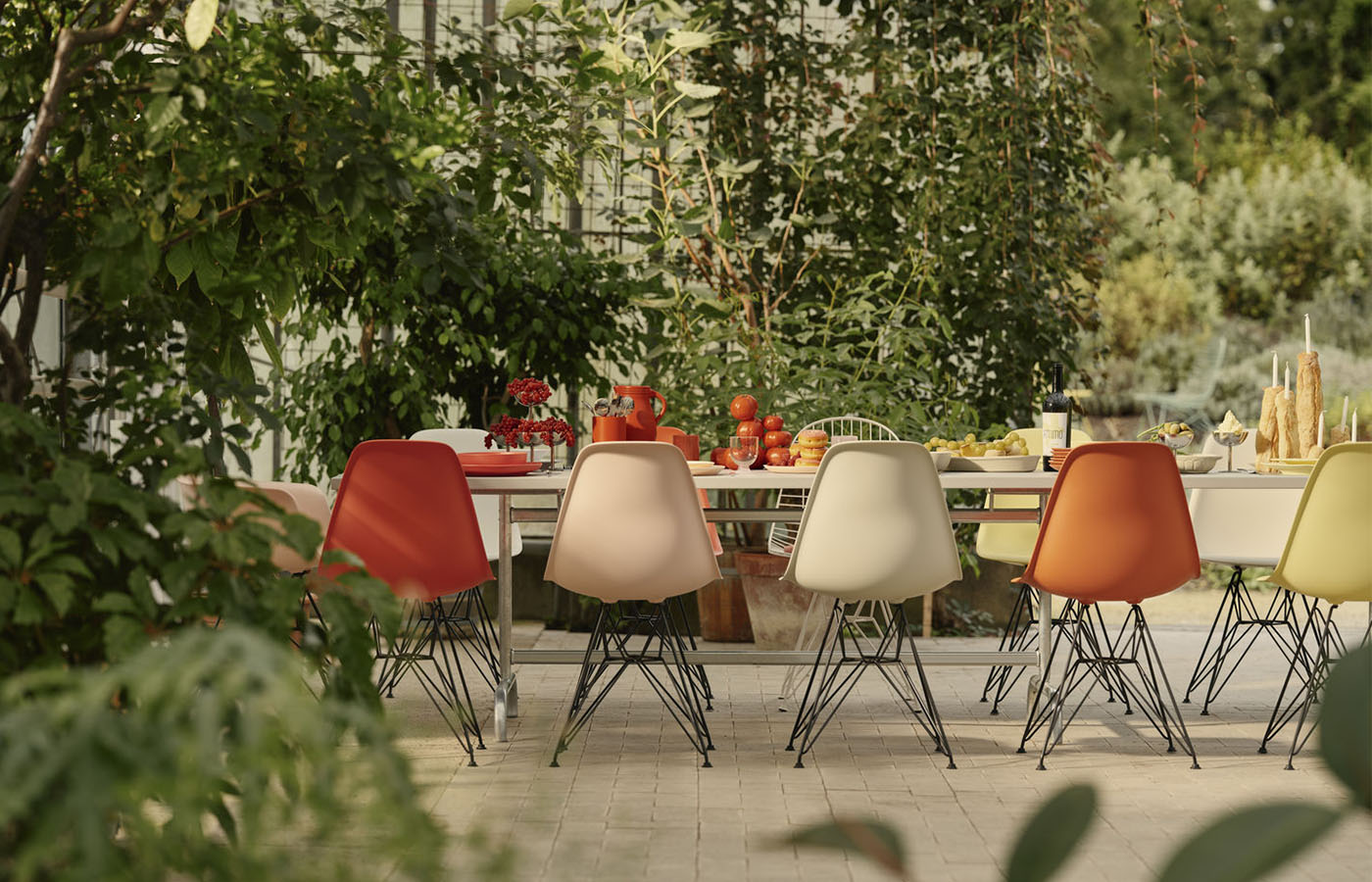cesca chair
whats the history of the cesca chair?
The Cesca Chair, originally known as the B32 was conceived in 1928 shortly after Marcel Breuer’s departure from the Bauhaus school in Dessau, Germany. Although the design postdated his formal time at the institution, it bore the unmistakable influence of the Bauhaus ethos, combining functionality, simplicity, and mass production.In the 1960s, the Italian furniture company Gavina Group acquired rights to the design. Founder Dino Gavina renamed it “Cesca” in honor of Breuer’s daughter, Francesca. This marked the beginning of the chair's wider dissemination. When Knoll acquired Gavina in 1968, the Cesca Chair was introduced to an international audience, solidifying its status as a modern classic.
the design
Breuer's vision was to create a chair that embodied “ visual and physical lightness.” The Cesca achieves this through both its minimalist silhouette and its material transparency. Its radical departure from traditional four-legged chairs helped pave the way for future innovation in modern furniture design.
how is it made?

who was Marcel Breuer?
what are the choices?
wood + woven
The iconic seat features machine-woven cane inserts, this process is quicker than hand weaving and has drastically reduced the price. This version comes as a cesca dining chair or cesca dining armchair.
wood + woven + upholstery
The cesca chair with a woven back and upholstered seat, available in a dining armchair and cesca dining chair version.
wood + upholstery
The Knoll cesca chair with fully Upholstered back and seat, see the cesca dining chair and cesca dining armchair version.
bauhaus matte version
A bold reimagination of Marcel Breuer’s iconic design, the Bauhaus Edition Cesca Chair injects fresh colour into a modernist classic in the form of a coloured matte frame. The frame comes in white, dark red or onyx and a choice of black or light beech seat and backrest surround.

real or fake?
In a market flooded with imitations, choosing an authentic Cesca Chair by Knoll offers more than just aesthetic value it ensures integrity of design, craftsmanship, and material. The frame is stamped with the Knoll logo and Marcel Breuer’s signature, ensuring lifetime authentication
Here’s why the original stands apart:
Its faithful to Breuer’s vision
Produced to the exacting standards set by Breuer and preserved by Knoll
Premium materials
Durable tubular steel
Woven cane and solid wood frame ensure longevity and elegance
Ethical production -Manufactured with attention to sustainability, labour standards, and quality control.
Timeless versatility - whether in a dining room, studio, or office, the Cesca complements both modern and traditional interiors.
Heritage and legacy - Owning an authentic Cesca Chair means owning a piece of design history, a true icon of the modern movement.
FAQS
cesca chairs
What is the Cesca Chair?
The Cesca Chair is a modernist design classic, originally called the B32, created by Marcel Breuer in 1928. It combines a tubular-steel frame with a woven cane (rattan) seat and backrest, achieving a striking balance between industrial and natural materials.
Who designed the Cesca Chair?
The chair was designed by Marcel Breuer, a Hungarian-born architect and designer associated with the Bauhaus school.
Why is the Cesca Chair seen as an icon of modern design?
Its cantilevered steel frame (a continuous loop of tubular steel) removes back legs to create visual lightness. The use of woven cane for the seat/backrest gives a natural, warm contrast to the industrial steel. It was one of the first mass-produced chairs to combine craft and industrial materials a hallmark of modernist Bauhaus design.
What materials are used in the Cesca Chair?
Frame: 25 mm tubular steel (chrome-plated or epoxy-painted in some models)Seat & Back Frame: Hardwood (beech)Seat & Back Filling:Woven cane (rattan)
Upholstered versions: with foam + fabric or leather, depending on the model.
What sizes / dimensions does the Cesca Chair come in?
Armless (Dining) Cesca Chair: ~ 46 cm wide × 58 cm deep × 80 cm high, with a seat height of ~46 cm. Armchair version: has wider dimensions due to the beechwood arms.
Is the Cesca Chair still produced today?
Yes the Cesca Chair is still manufactured by Knoll, the licensed producer of Breuer’s design.
How can you tell if a Cesca Chair is authentic?
Some key signs of an authentic Knoll Cesca Chair:The Knoll Studio logo and Marcel Breuer’s signature are stamped on the base. The tubular steel ends are welded and polished (not just plastic caps). The seat frame (cane) curves at the front to follow the steel frame bend cheaper reproductions often don’t do this.
What finish / style options are available for the Cesca Chair?
Classic cane version: Steel + beech frame + woven cane seat/back.
Upholstered seat: Fabric or leather on foam over a plywood support. Bauhaus Edition: Matte-colored steel frames (e.g. black, white, red) with matching beech trims.
How should I care for my Cesca Chair?
Steel frame: Wipe with a soft cloth; avoid abrasive cleaners that might damage chrome or paint.
Cane seat/back: Clean gently with a soft brush and mild soap; do not oversaturate with water to avoid weakening the cane.
Upholstered version: Follow the manufacturer’s instructions for the fabric/leather; vacuum regularly and spot-clean as needed.
Is the Cesca Chair comfortable?
Yes its cantilever frame gives a subtle “bounce” or flex, making it surprisingly comfortable. The seat back is also gently curved, and the cane version provides breathability. We have one in our home office as our desk chair and its very comfortable.
Is the Cesca Chair a good investment?
Yes it's a design classic that has both historical significance and lasting appeal. An authentic model from Knoll holds value well due to its quality materials and design pedigree.
Why is the chair called “Cesca”?
The name “Cesca” was given by Dino Gavina, the Italian manufacturer, in tribute to Marcel Breuer’s daughter Francesca (nicknamed “Cesca”).














